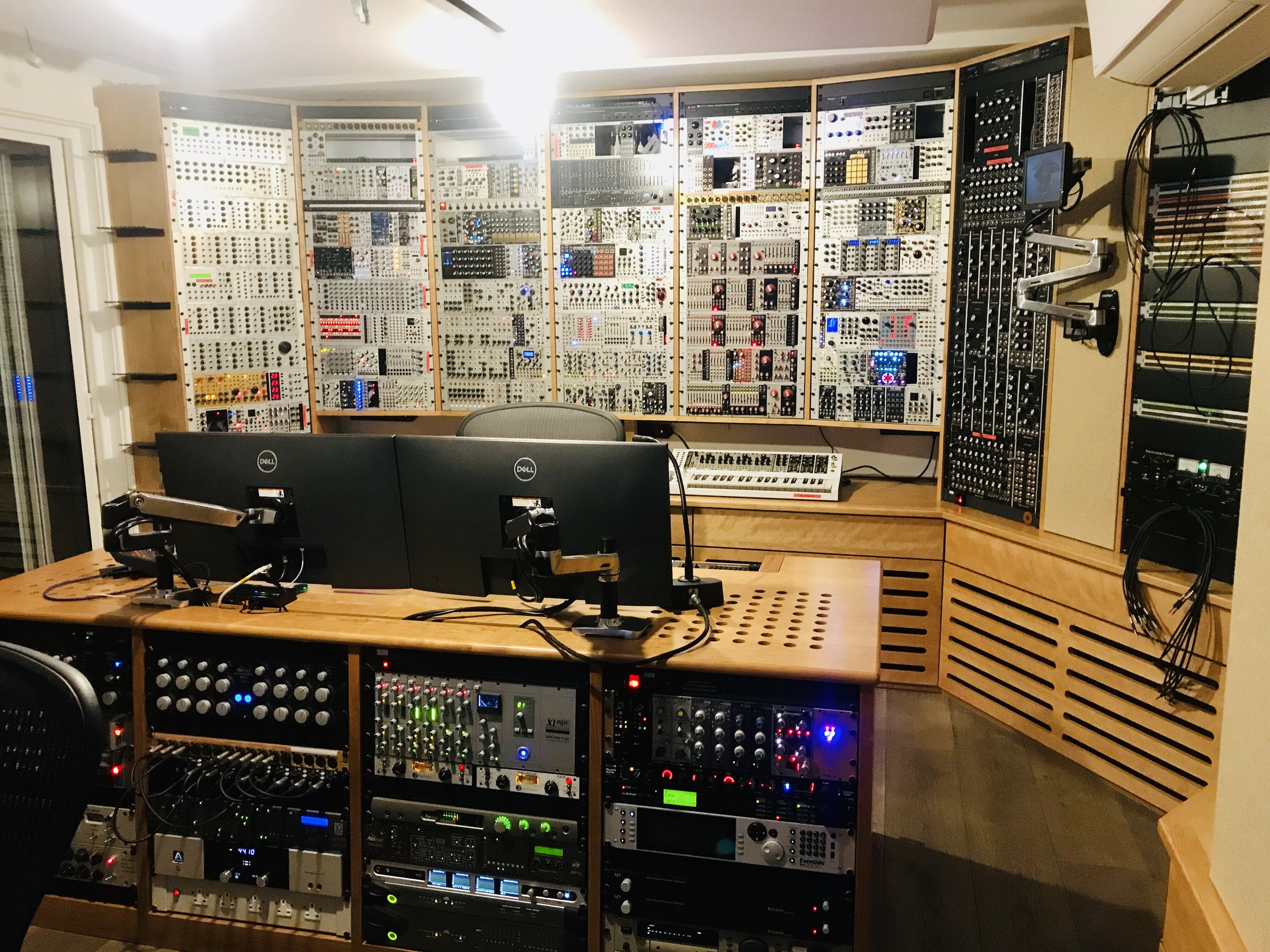John Lunn is an award-winning composer, renowned for his work on the likes of The Last Kingdom, Downton Abbey and Grantchester. Having handled support, maintenance and upgrades for John’s two London studios since 2012, Yellow Technology were tasked with a complete studio redesign and installation in 2021.
LIstening Position Logistics and Ergonomics
John had long grappled with compromises around his studio layout. He required good monitoring for composing at his Doepfer workstation keyboard, but also for working at his extensive array of modular synths at the other end of the studio; to compound matters further, John’s sound engineer also required optimal monitoring when mixing at their SSL AWS 948 mixing console.
Both John and his sound engineer needed easy access to different pieces of outboard equipment and processing. They also required convenient eye-level positioning for their ever-growing patchbay!
With hundreds of potential I/O paths from synths, microphones, outboard, and discrete Logic Pro and Pro Tools rigs, elegant cable containment through the studio was becoming a real challenge.
Acoustic Challenges
The aforementioned positioning conflicts were causing numerous unwanted acoustic artefacts in the previous iteration of the studio. Space for acoustic treatment was also at a premium, with lots of outboard processing and modular synths to house; but also restrictions on the usage of low-level space due to the presence of basement underpinning.
Multipurpose Solutions
Conscious of the opportunities afforded by a fresh start, Yellow Technology set about looking at solutions that addressed multiple problems simultaneously:
A new control room layout devised to facilitate optimal stereo image reproduction for both John and his sound engineer but also to place them close to key equipment areas;
Bespoke control room furniture was designed to combine the concept of a workstation desk with that of an outboard island; allowing both John and his engineer to have the equipment they required at their fingertips, whilst making efficient use of the limited floorspace. John’s Doepfer keyboard and key effects were integrated into the front, whilst 56U of mixing outboard equipment for his sound engineer was accommodated in the rear - right next to his new monitoring position at the mixing desk.
Custom floor-to-ceiling joinery was designed to:
Discretely house cable routes throughout the studio, with removable sections for futureproofing;
Contain acoustic treatment around the basement underpinning, in key reflection areas and between equipment racks;
House 2,600 HP of modular synths next to John’s workstation position;
Accommodate a large jackfield at eye-level along with key outboard equipment;
Provide a long bench surface at the studio rear for various freestanding keyboards and vintage synths;
Support wall-integrated ATC SCM50 loudspeakers on mounts custom-designed to rest above the basement underpinning.
A versatile custom audio wiring and patching system was developed to link up the various areas of the studio to enable rapid monitoring and recording of any signal from any location. Both modern and vintage synths were integrated into the system.
A new live room layout was designed to provide enough space to record a small ensemble, but also with built-in housing for vintage synthesisers and effects processing.
Live room acoustic treatment was integrated into custom furniture to provide additional storage for instruments, cables and stands without compromising sonic excellence.

